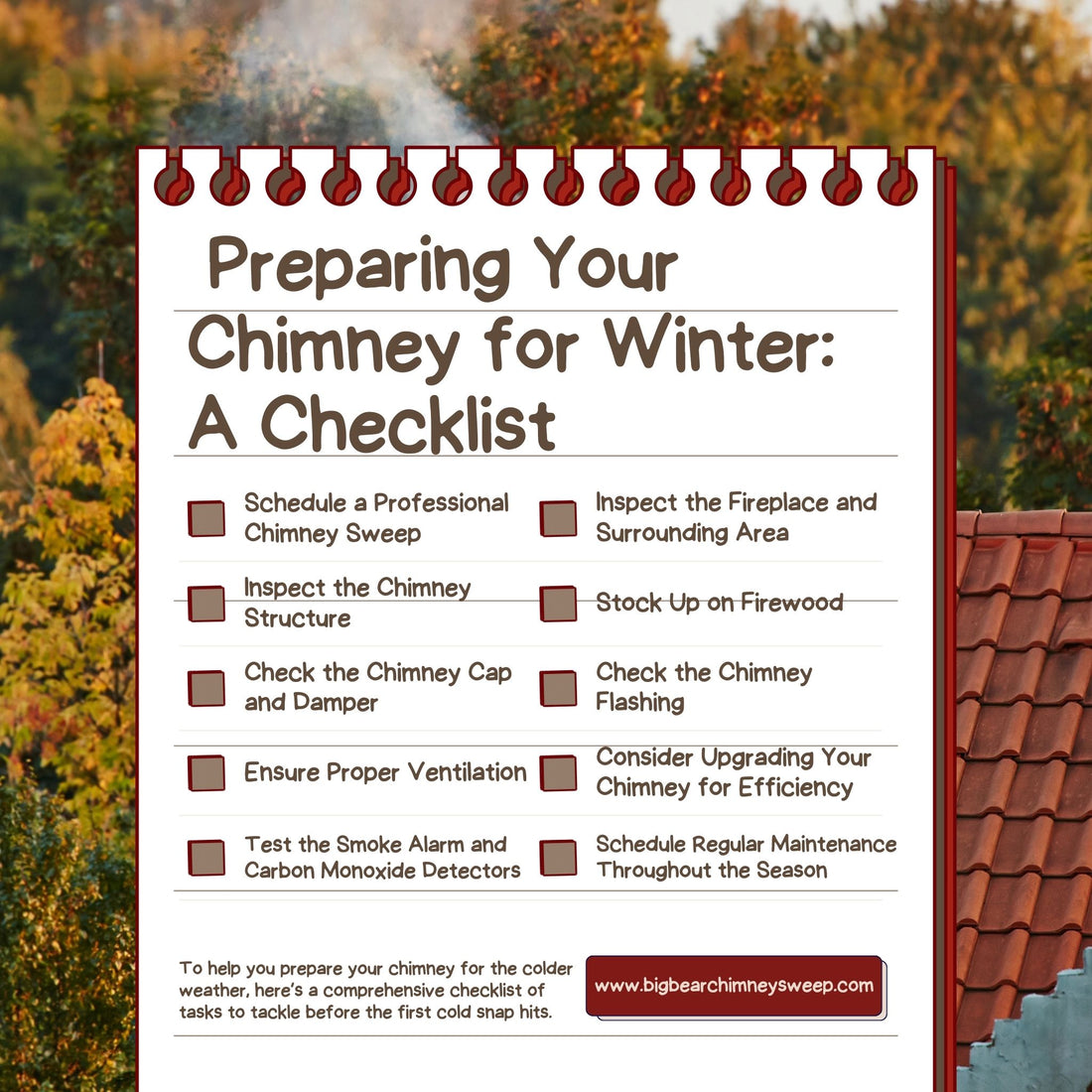
Preparing Your Chimney for Winter: A Checklist
Share
As the winter months approach, it's important to ensure that your chimney is ready for the season. A properly maintained chimney not only keeps your home warm but also ensures safety and efficiency while reducing the risk of potential hazards. To help you prepare your chimney for the colder weather, here’s a comprehensive checklist of tasks to tackle before the first cold snap hits.
1. Schedule a Professional Chimney Sweep
The most important step in preparing your chimney for winter is to have it professionally cleaned. A chimney sweep will remove soot, creosote, and debris that can build up over time. Creosote is highly flammable and one of the main causes of chimney fires, so ensuring that your chimney is free of buildup is essential for both safety and efficiency.
- What to Check: Soot, creosote buildup, and debris.
- Tip: Have your chimney swept at least once a year, or more often if you use your fireplace frequently.
2. Inspect the Chimney Structure
Before using your chimney this winter, inspect its overall structure. This includes the chimney stack, the flue, and the chimney cap. Ensure there are no cracks, gaps, or blockages that could impede proper airflow. A damaged chimney can lead to hazardous situations, including carbon monoxide buildup inside your home.
- What to Inspect: Flue liner, masonry, mortar joints, chimney cap.
- Tip: If you notice any cracks or holes, have them repaired by a professional chimney technician.
3. Check the Chimney Cap and Damper
The chimney cap serves multiple purposes—it keeps debris, animals, and water out of your chimney. The damper, on the other hand, controls airflow and can help with energy efficiency. Ensure both are functioning properly before the winter chill sets in.
- What to Check: The damper should open and close easily. The chimney cap should be secure and free of damage.
- Tip: Consider installing a chimney cap with a mesh screen to prevent animals from entering.
4. Ensure Proper Ventilation
Proper ventilation is crucial for your chimney to function effectively. Make sure that the venting system is not obstructed by leaves, twigs, or other debris. If you have a wood-burning fireplace, ensure that the flue is fully open to allow the smoke to escape.
- What to Check: Ensure the venting system is clear of obstructions.
- Tip: Trim back tree branches near the chimney to prevent leaves and twigs from falling into the flue.
5. Test the Smoke Alarm and Carbon Monoxide Detectors
It's always a good idea to test the smoke alarms and carbon monoxide detectors in your home before using the chimney for the season. These devices are essential for keeping your family safe in case of a malfunction or chimney fire. Replace the batteries and ensure they are working correctly.
- What to Test: Smoke alarms, carbon monoxide detectors.
- Tip: Test these devices monthly to ensure they are always ready to alert you in case of an emergency.
6. Inspect the Fireplace and Surrounding Area
Before using your fireplace this winter, inspect the hearth and surrounding areas for any signs of damage. Look for cracks in the fireplace, damaged tiles, or worn-out seals that could allow heat to escape or air to enter. These small issues can lead to bigger problems if not addressed.
- What to Inspect: Firebox, hearth, fireproof sealant, glass doors.
- Tip: If you have a gas fireplace, make sure the gas lines are intact and free of leaks.
7. Stock Up on Firewood
If you plan to use your fireplace for heating, it's a good idea to stock up on dry, seasoned firewood. Wet or green wood burns inefficiently and can contribute to the buildup of creosote in your chimney. Store the firewood in a dry, well-ventilated area to ensure it's ready when you need it.
- What to Stock: Dry, seasoned firewood.
- Tip: Stack firewood away from your home to prevent pests from nesting in it.
8. Check the Chimney Flashing
The flashing is the material around the chimney where it meets the roof. It’s designed to prevent water from leaking into your home. Inspect the flashing for any signs of damage or wear. If you notice any issues, such as rust or gaps, have them repaired by a roofing professional before winter.
- What to Check: Gaps, rust, or wear around the chimney flashing.
- Tip: Ensure the flashing is properly sealed to prevent leaks and water damage.
9. Consider Upgrading Your Chimney for Efficiency
If you frequently use your fireplace or stove during the winter, consider upgrading to a more energy-efficient model. Modern wood stoves and fireplaces offer better heat retention and improved ventilation, reducing the amount of fuel you need to burn while still providing warmth.
- What to Upgrade: Wood stoves, fireplace inserts, or chimney liners.
- Tip: Consult a chimney professional for recommendations on energy-efficient options.
10. Schedule Regular Maintenance Throughout the Season
After your chimney is prepared for winter, it’s important to schedule regular inspections and cleanings throughout the season. Regular maintenance ensures that your chimney remains in safe working condition and prevents future problems from arising.
- What to Schedule: Annual inspections, cleanings, and repairs.
- Tip: Keep track of maintenance dates and any repairs needed to stay on top of chimney care.
Conclusion: A Safe and Cozy Winter Starts with Chimney Maintenance
Preparing your chimney for winter is essential for ensuring safety, efficiency, and warmth during the colder months. By following this checklist, you can reduce the risk of chimney fires, carbon monoxide poisoning, and other chimney-related hazards. Don’t wait until the first snowstorm—get your chimney ready now and enjoy a cozy, worry-free winter season.
